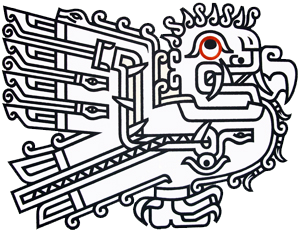Description
Carved and engraved jade pectoral from the site of Nebaj (Quiché department) in Guatemala. It is 14.5 cm wide and 10.2 cm high (Museo Nacional de Arqueología y de Etnología de Guatemala). This magnificent piece belongs to the late classical Maya civilisation. It proves that the Indian craftsmen worked with an unquestionable mastery of the most diverse materials, be it stone, clay or wood. Imitating their illustrious predecessors of the Formative period, the Olmecs, the Maya used jade, which they imported from the mountainous regions of the continent. From this stone they made a multitude of statuettes, ornaments and representations of their gods. Some of these jade pectorals are often covered with fine engravings that represent figures seen in profile and in the most diverse poses. They have a characteristic face that can still be found today among many Indians of the high plateaus of Mexico and Guatemala. - 1977





